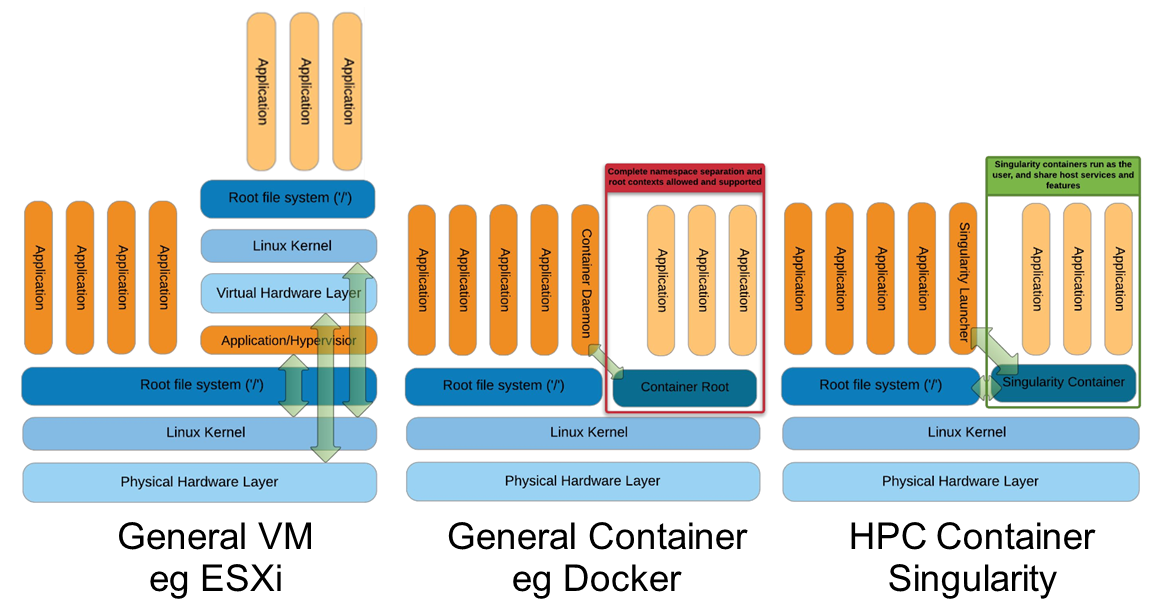4.1 Introduction to Singularity
- Focus:
- Reproducibility to scientific computing and the high-performance computing (HPC) world.
- Origin: Lawrence Berkeley National Laboratory. Later spin-off: Sylabs
- Version 1.0 -> 2016
- More information: https://en.wikipedia.org/wiki/Singularity_(software)
4.1.1 Singularity architecture

| Strengths | Weaknesses |
|---|---|
| No dependency of a daemon | At the time of writing only good support in Linux Mac experimental. Desktop edition. Only running |
| Can be run as a simple user Avoids permission headaches and hacks |
For some features you need root account (or sudo) |
| Image/container is a file (or directory) | |
| More easily portable | |
| Two types of images: Read-only (production) Writable (development, via sandbox) |
4.1.2 Strengths
- No dependency of a daemon
- Can be run as a simple user
- Avoid permission headaches and hacks
- Image/container is a file (or directory)
- More easily portable
- Two type of images
- Read-only (production)
- Writable (development, via sandbox)
4.1.3 Weaknesses
- At the time of writing only good support in Linux
- Mac experimental. Desktop edition. Only running
- For some features you need root account (or sudo)